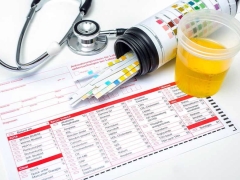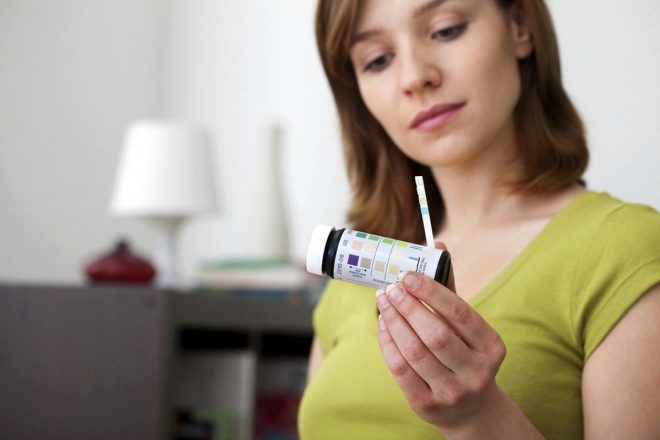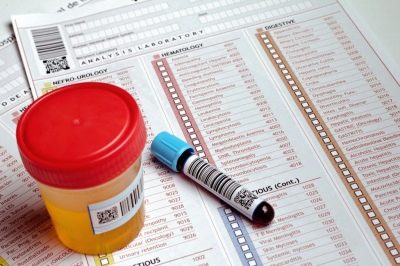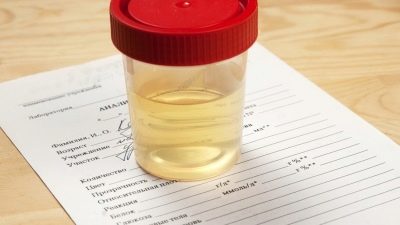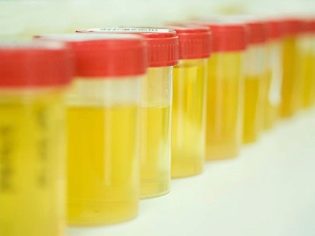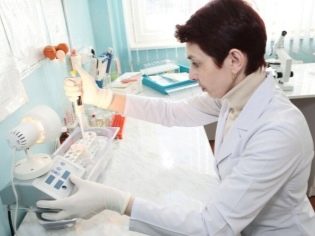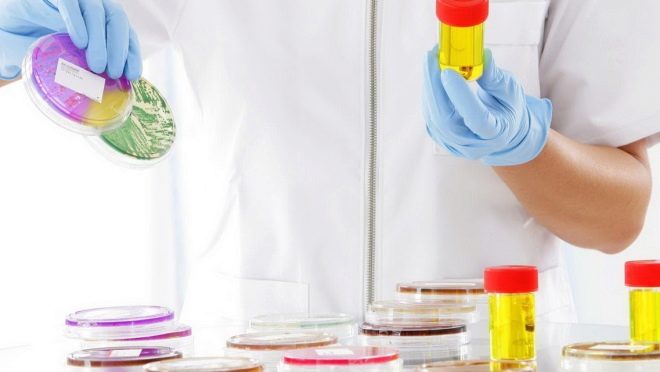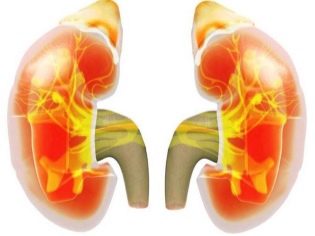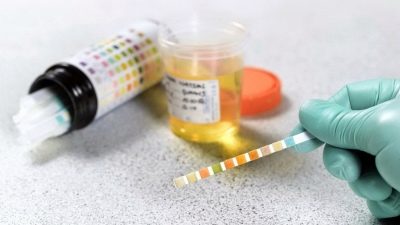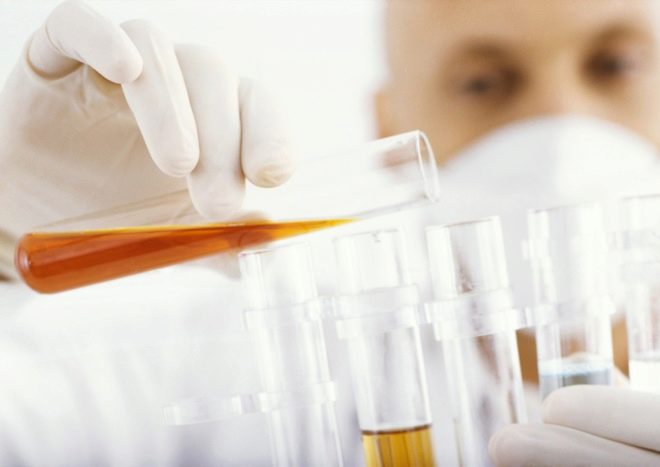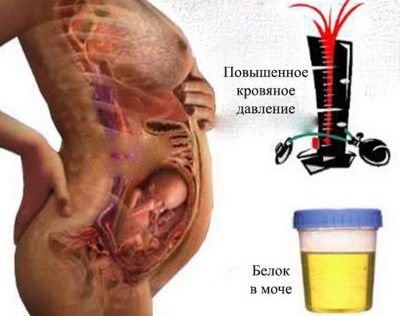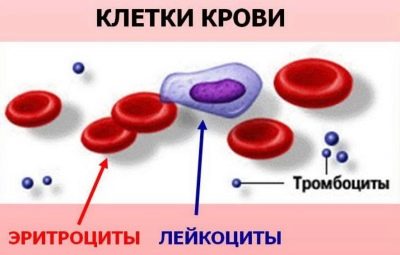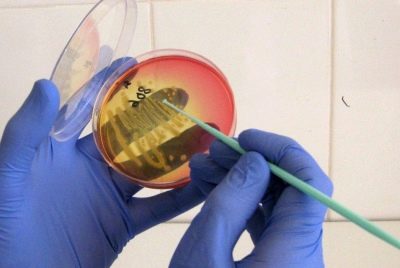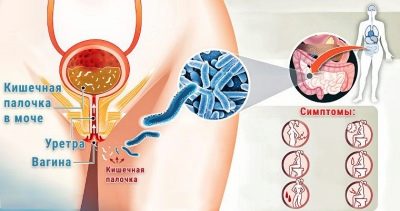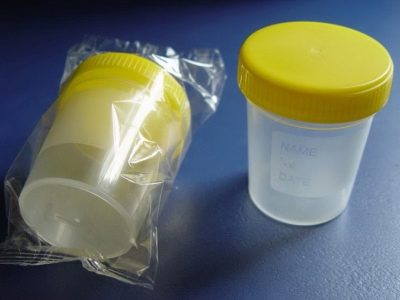Why do urine tests during pregnancy and how to decipher them?
The most common analysis during pregnancy is urinalysis. He is appointed to all, without exception, and before each planned visit to the obstetrician-gynecologist. Why this study is done so often and what it can tell the experts, we will tell in this article.
Kinds
Urine analysis is a rather broad concept. This diagnostic method has been known for a long time and is popular in medicine. Examination of urine content allows the doctor to make a fairly accurate picture of the patient's health and the processes that take place in his body.
For pregnant women, timely diagnosis of even minor deviations is very important. That is why a simple urine test that does not require any effort on the part of the patient is recommended so often.
The growing uterus can squeeze the internal organs, and especially the kidneys, bladder, and ureters are affected. Prolonged pressure can lead to the development of severe lesions of the organs of the urinary system. According to the composition of the urine, the doctor may conclude whether the kidneys, liver, pancreas of the future mother are working properly, whether she has preeclampsia, diabetes mellitus, or an inflammatory process.
Research urine are different. All, without exception, expectant mothers appoint general (clinical) urine analysis. Sometimes there is a need to conduct an analysis according to Nechiporenko or Zimnitsky, sometimes there is a need to establish only certain parameters - the presence of sugar in the urine, the amount of uric acid. At the earliest dates a woman makes hCG assay. It can be carried out both in the laboratory and at home; for this, there are pharmacy tests for pregnancy. At least once during the period of carrying a baby, a woman is given a referral on bakposev urine.
All these studies are carried out by different methods and have completely different goals. To understand why the consultation wrote out a direction for a particular study, you need to know the difference between the most common types of diagnostics of urine.
Overall
This analysis gives a general idea of the quantitative composition of urine. The laboratory assistant sets the amount of liquid, its color, transparency, smell. Physico-chemical research allows us to understand what the density of urine and its acidity. Biochemical methods allow us to find out exactly which substances are present in the liquid. The list of "sought" includes proteins and enzymes. Under a microscope, the specialist calculates the contents of the sediment - epithelial cells, red blood cells, if any, leukocytes, salts, urates and oxolates, and phosphates, if urine is alkaline. For research surrenders morning portion of urine.
According to Nechyporenko
The study is named after the scientist who first proposed such a diagnostic method. It happened in the middle of the twentieth century. Since then, a simple and informative method has found wide application.The analysis allows to establish the level of leukocytes, erythrocytes and cylinders in the secreted fluid in case of suspected inflammation in the urinary system.
Not always with diseases such as cystitis and pyelonephritis, it is possible to detect the true amount of these indicators in the overall analysis. With symptoms and previously diagnosed diseases of the genitourinary system, the Nechiporenko sample is prescribed for pregnant women in all cases. For research requires a morning portion of urine.
According to Zimnitsky
This method of laboratory diagnostics allows specialists to find out how well the kidneys concentrate urine, as well as to establish the volume of daily diuresis. Understanding exactly how much urine the patient's kidneys excrete per day, including at night, is necessary for the diagnosis of pathologies of the kidneys and cardiac activity.
Morning urine is not suitable for research. But after the first urination, urine is recommended to be collected in eight cans, every three hours. In this case, the future mother will have to calculate and write down how much fluid she consumed.
Bakposev
This study is conducted not only to find out if the expectant mother has any infections or inflammation, but also to determine the exact causative agent of these ailments and understand how to fight it. Thus, during bacterial infection, laboratory technicians determine the type of bacteria and its resistance to various antibiotics. Used for diagnosis average portion of urine.
Decoding and causes of deviations
The normal result of a clinical analysis with an uncomplicated pregnancy is as follows:
Definable indicator | Average rate during pregnancy |
Colour | all shades of yellow from straw to saturated |
Transparency | transparent |
Smell | specific, characteristic, unsharp |
Relative density | 1003 – 1035 |
Acidity (pH reaction) | 5.0 - 7.0 (sour, slightly acid, neutral) |
Protein (protein) | missing or less than 0.033 g / liter |
Glucose (sugar) | missing or does not exceed 0.083 mmol / liter |
Bilirubin | missing |
Urobilinogen | no traces allowed |
Ketone bodies | absent |
Hemoglobin | missing |
Red blood cells | 0-2 in sight |
White blood cells | 0-5 in sight |
Flat epithelium | 0-3 in sight |
Transitional epithelium | unit |
Renal epithelium | missing |
Hyaline Cylinders | no more than 1-2 |
Other cylinders | absent |
Bacterial flora | missing |
Fungal flora | missing |
Salts and salt fragments | absent or present in small quantity |
Slime | missing |
What do these or other indicators indicated in the table indicate, it becomes clear if you know the evaluation criteria.
Amount of urine
Normally, a woman should allocate about 75% of all the fluid she drank. The rest of the moisture goes on intracellular nutrition. The rate of daily urine is about 2 liters and slightly less. The increase in daily volume is called polyuria. In pregnant women, this may be due to the consumption of too much liquid, products that have a natural diuretic effect.
In addition, the number of urine may increase if a woman has suffered severe nervous stress, she began to dissolve edema. Excess daily allowance can be a sign of diabetes mellitus, as well as a consequence of a previous illness associated with fever.
If the amount of urine is reduced to half a liter, then this phenomenon is called "Oliguria". So the body begins to work in conditions of lack of fluid, if a woman drinks little and sweats a lot. Oliguria is also characteristic of pregnant women with heart, kidney, and acute liver failure.
Anuria - this is almost complete absence of urine, if a pregnant woman releases only 200 grams of this fluid per day. This is an indicator of acute renal failure, meningitis, severe toxic poisoning. Anuria can also occur if the stones block the urinary tract, if a tumor forms on one of the sites.
Colour
Yellow color, which is considered completely normal, is given to urine by special pigments - urochromes. Bright yellow urine is observed with increasing concentration, the proportion of all substances dissolved in it. This usually occurs when dehydration, toxicosis, associated with vomiting. Pale, light or almost transparent urine may indicate the presence of sugar or gestational diabetes, an increase in blood sugar and urine of the expectant mother.
The golden color of the urine can change to orange if there is bilirubin in the urine, liver functions are impaired, if there are blood diseases with a massive breakdown of red blood cells. Pink urine can be a sign of an incipient urinary system disease, and the red fluid excreted by the kidneys becomes due to blood impurities characteristic of various injuries and inflammatory processes of the urinary tract, kidneys, ureters, and bladder.
Brown urine can accompany many diseases of the liver, gallbladder, pancreas, and infectious hepatitis. Greenish urine becomes infected with Pseudomonas aeruginosa, white when lymph or pus gets into it, blue or blue with an intense suppurative process in the intestine with the formation of indigo pigment and with rare metabolic disorders associated with excessive accumulation of protein tryptophan.
Dye urine in different colors can and food, and drugs. So, beetroot and red food colors give the emitted liquid a red color, carrots, carrot juice, oranges and some multivitamin complexes - in orange. The preservatives that produce canned meat, cherries and blackberries, are pink, and folic acid, which all expectant mothers take when they are expecting a baby, is brown. Red shades appear with a large dose of acetylsalicylic acid.
Only the color of urine, no one will establish a diagnosis. If you deviate from this indicator, the other parameters will be examined more carefully so that the reason for the change in hue becomes apparent.
Smell
Normal urine slightly smells of ammonia. In a healthy pregnant the liquid must not have a strong odor. If the urine sample smells bad, the technician will try to determine the nature of the smell and describe it.
So, the smell of acetone is characteristic of women in a state of ketonuria. An unpleasant smell of feces in the urine occurs when a bacterial infection of the urinary tract, the causative agent of which became E. coli. The strong smell of ammonia can talk about cystitis. Experienced technicians distinguish about a dozen different nuances - the smell of rotten fish, a rancid fishy smell, musty mouse, the smell of a swimming pool and sweaty feet. Each phenomenon has its own name.
The woman herself can pay attention to the fact that during pregnancy, even in the early stages, the smell of urine changes. This is due to the fact that changing the composition of urine.
New conditions in which the future mother's body works require mobilization of all possibilities, hormonal changes. This can not affect the smell of fluid excreted by the kidneys.
Specific weight (relative density)
Density of substances dissolved in urine is a non-permanent concept. During the day, urine density may vary. In the morning it is higher, in the evening it decreases. If the amount of liquid is small, then its density is usually higher. If the proportion is below normal, then we can talk about diabetes or renal failure. The presence of sugar and protein in the urine makes it more dense.
Transparency
The norm is the absence in the urine of suspended matter, white flakes, visible sediment. Turbid urine may indicate that the analysis is not collected correctly, and that protein, mucus, bacteria, fats or salts are present in the body fluid. To understand that of the above, the fluid produced by the kidneys is clouded, lab technicians heat the sample. If the cause is salt, then when heated, the urine becomes transparent.
If vinegar is added to the sample and the urine ceases to be turbid, then the cause of turbidity is in phosphates, better known as amorphous crystals. If the liquid becomes clear after adding hydrochloric acid, the reason is oxalate. Fat in the urine is easily dissolved by the addition of alcohol, but if there is pus in the urine, then it cannot be achieved either by heating or by adding reagents.
Foam is formed on each sample, if it is well shaken. But with a poor analysis, it is persistent and does not disintegrate for a long time, and with liver diseases and elevated bilirubin it is also yellow. Healthy urine foam is unstable, transparent, quickly disappearing.
Acidity
The acidity of the urine depends on what the pregnant woman eats and drinks. For example, large amounts of plant foods, dairy products increase the pH. Acidity increases in some diseases, for example, with prolonged diarrhea, with dehydration, as well as with renal failure and infectious diseases.
Protein
Protein in urine should not be, but a small amount indicated in the table is considered valid during pregnancy. The reason for the increased protein content in the excreted fluid may be pressure of the uterus on the renal veins and liver. A slight excess or traces of protein are found with a large amount of protein products in the diet of the future mother, as well as strong physical exertion.
Sugar
Glucose is necessary for energy metabolism. Both the woman and her baby need it. Therefore, the body of a pregnant woman begins to accumulate glucose, which can result in an excess of this indicator. But in most cases sugar increase - an alarming sign, indicating the presence of diabetes, which the woman herself may not even guess about the violation of the filtering function of the kidneys, about failures in the pancreas, which produces insulin.
Bilirubin
Only a few units of direct bilirubin in urine are considered normal. The phrase "in sight" means that it is exactly the number of substance molecules that are detected by microscopic examination in the inspection area. If bilirubin is still found, the doctor may suspect a pregnant liver problem or blood disorders in which red blood cells break down. It is during this process that bilirubin is produced, which gets into the kidneys with blood. Elevated bilirubin can be with hepatitis.
Leukocytes and red blood cells
Blood cells in normal urine should not be. The permissible value of leukocytes is just a few units in sight. Increasing this amount may indicate an infectious disease, inflammation. Significant excess of the leukocyte rate indicates that a serious inflammation develops in the body of the future mother, the urine itself is turbid, foams, has a putrid and very unpleasant smell.
Epithelium
The definition of epithelial cells in the secreted fluid allows us to establish in which department of the urinary tract there are problems. If the squamous epithelium is elevated, it means that inflammation or trauma has arisen in the bladder area. The cubic epithelium says that the ureters and the pelvis are damaged. Renal says kidney damage.
According to Nechyporenko
Urine analysis according to Nechiporenko can be assigned to the expectant mother, if the overall analysis is bad. This method will allow you to clarify some indicators that are important for diagnosis. A good general analysis can also give direction, if a woman has edema, there are complaints about painful urination, or there have been urinary tract diseases. Normally, the results should be as follows:
- leukocyte count - not more than 2000;
- the number of red blood cells - no more than 1000;
- cylinder content - not more than 20.
To decipher the results of the test according to Nechiporenko should be a doctor.After all, it is not only important whether the three main parameters are changed in a big direction, but also how much the levels of these parameters agree with each other.
According to Zimnitsky
Since the excreted liquid is collected for such an analysis during the day, it is considered normal if the daily volume of diuresis is higher than the night one, and the total amount of urine should not be less than 1.7-2 liters or 75% of the liquid drunk by the woman (the calculations include and soups, and tea, and plain water.
In each of the jars will be calculated density, acidity. If at least one of the portions is below the permissible threshold of 1012 g / liter, then you will need to visit a nephrologist to be sure to consult with him, ultrasound of the kidneys and bladder can also be recommended. Deviation is also considered a large range of fluctuations in density at different times of the day, as well as an increase in nighttime diuresis.
Bakposev
The presence of a bacterial infection process in a woman’s body can have serious consequences for her child’s condition. That is why it is important and necessary to make the diagnosis of urine on bacteria.
The decoding of such an analysis of labor is not, in the list next to the names of fungi and bacteria, the laboratory technician puts "-" if they are not found, or "+" if the bacterium is found. For the detected microbe, an additional test is carried out, the task of which is to determine to which species of antibiotics it exhibits an increased sensitivity.
In general, urine is not sterile. But breeding microbes in large quantities - an unfavorable diagnostic picture.
Staphylococcus and streptococcus, enterococcus (usually enterococcus faecalis), escherichia coli (E. coli), klebsiella (klebsiella pneumoniae) can be found in the fluid secreted by the kidneys.
All microbes and fungi are a great danger for the baby. The effect of Escherichia coli on the fetus may lie in the probability of intrauterine infection, which can result in meningitis and the death of the crumbs either in utero or after a short time after birth. The placenta, of course, will by all means protect the baby from aggressive bacteria, while she herself will quickly age, scar, the blood supply of the small organism, its oxygenation and nutrients will be impaired.
If the pregnant urine bacterus does not inspire optimism to her doctor, then, most likely, antibiotic treatment will be prescribed.
You should not be afraid of it, the doctor will surely weigh all the risks and prescribe only those drugs that, with the right treatment regimen and the right dosage, will not harm the baby.
How to pass?
General analysis should be submitted after preliminary preparation. To make the sample transparent, have a normal color, spicy dishes, salty foods, as well as all those that can give an urine an abnormal color (beets, carrots, etc.) should be excluded from the diet.
If the woman accepts the recommended multivitamin complexes for pregnant women., one day is better to refuse to take another vitaminIt is also not worth taking folic acid for about 24 hours. 12 hours It is necessary to limit yourself to physical exertion, and also better to refrain from sex.
On the morning of the day of delivery, the woman should wash out without soap, and then collect the middle portion of morning urine in a clean and dry pharmacy jar. This means that the beginning and end of urination should be carried out in the toilet, and the middle part of the urine collected in the bank. It is important that vaginal secretions do not get into the sample, for this, a small piece of cotton wool woman gently closes the entrance to the vagina at the time of collecting material.
A tightly closed container should be delivered to a consultation or clinic no later than two hours after collection, otherwise the urine will begin the process of disintegration of some diagnostically important substances, and laboratory technicians will not receive the true result.
Nechiporenko analysis, as well as general clinical analysis, requires adherence to a diet that excludes fat, spicy and salty. It is important not to overheat the body before collecting the material - do not bathe in bathhouse, do not visit the sauna, do not use the heaters, do not sunbathe, do not take a hot bath. The rest of the procedure for collecting fluids does not differ from similar actions in the general analysis. Morning urine is collected, its middle part. The jar should be taken to the laboratory a maximum of 2 hours.
The analysis according to Zimnitsky is collected in 8 jars. Every 3 hours, except for the first morning portion. It does not need to collect. Collection rules are the same, only the entire volume of urine should be collected in a jar.and not only one middle part. Each jar or vial is signed, indicating the time and stored in the refrigerator until the end of the collection of the last can. After that, all eight containers and the amount of liquid consumed separately on paper is transported to the laboratory.
Bakposev requires special accuracy and hygienic measures, because given the huge number of bacteria that surrounds us in everyday life, it is so easy to get false positive results. It is impossible for the urine to take household vials and bottles, use for this method of diagnosis should only be sterile pharmacy containers for collecting tests.
Before the collection should certainly be undermined, but the soap should not be used. The entrance to the vagina must be closed with a cotton swab. For the diagnosis will require an average portion of morning urine. The amount of urine for any type of diagnosis should not be less than 150 ml, with the exception of the Zimnitsky sample.
If several times in a row, an analysis on bacposa gives a poor or paradoxical result, a woman can take urine with a catheter under the conditions of the treatment room. The procedure is not too pleasant, it is a minus, but not long, and this is a definite plus. It's important that This method of sampling will provide the most accurate results.
For information on why urine tests are done during pregnancy, see the following video.
